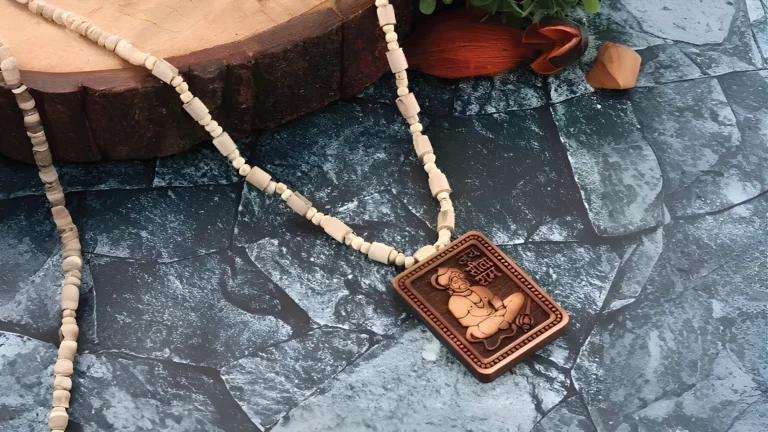How To Make Tulsi Mala At Home
Learn how to make a Tulsi mala at home with this easy, step-by-step guide. Learn the supplies, steps, and advice needed to make a holy Tulsi rosary by hand.
Table of Contents
- Spiritual Significance: Tulsi is highly esteemed in Hindu ceremonies and is thought to be the earthly manifestation of Goddess Lakshmi.
- Energy Purification: It is thought to cleanse the body, mind, and soul.
- Daily Meditation Tool: Chanting the Hare Krishna mantra or other divine names is customarily done with a tulsi mala.
How to Make Tulsi Mala at Home – Step-by-Step Guide
In Hinduism, tulsi, also called holy basil, is considered a sacred plant. Chanting mantras and practicing meditation with a Tulsi mala (rosary) is thought to promote spiritual strength, devotion, and serenity. Although purchasing one is simple, creating your own Tulsi mala at home is a profoundly spiritual and fulfilling experience.
This comprehensive guide will teach you how to make Tulsi mala at home with basic supplies and methods. This handmade mala holds the love and energy you put into making it, in addition to its religious significance.
Tools and Materials You’ll Need

Dry Tulsi Stems
Medium thickness, matured branches.

Sharp knife or mini saw
For cutting beads.
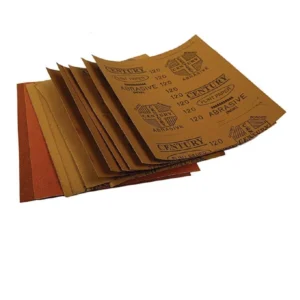
Sandpaper
For smoothing and shaping.

Hand drill or thick needle
To make holes in the beads.

Cotton or nylon thread
sufficiently sturdy to support every bead.
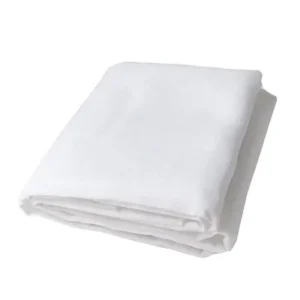
Clean cloth
For wiping and cleaning.
Select and Prepare Tulsi Stems
Harvest medium-sized Tulsi stems from a healthy, old plant (but only if it has passed or dried naturally). After giving them a gentle wash, let them dry for three to four weeks in a shaded spot until the wood solidifies.
Tip: Avoid direct sunlight to protect the wood’s sacred energy.
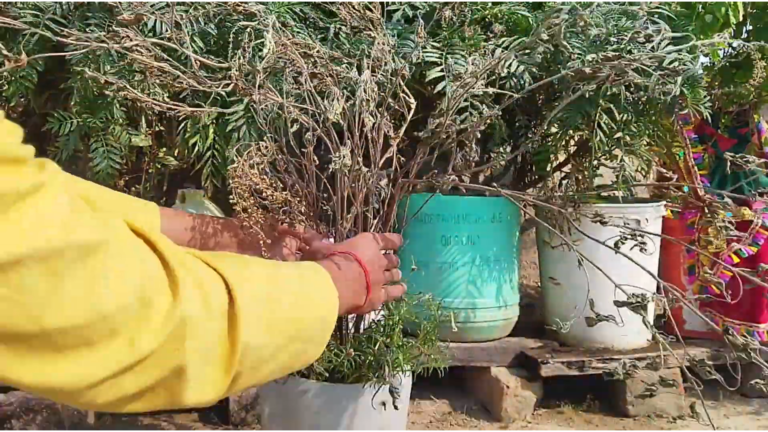
Cut Beads from the Stem
Cut the dry stems into uniformly sized pieces, about 6 to 8 mm in length, using a small saw or knife. To make the mala appear uniform, try to maintain a constant size.
Note: To prevent the wood from splintering, cut slowly and carefully.
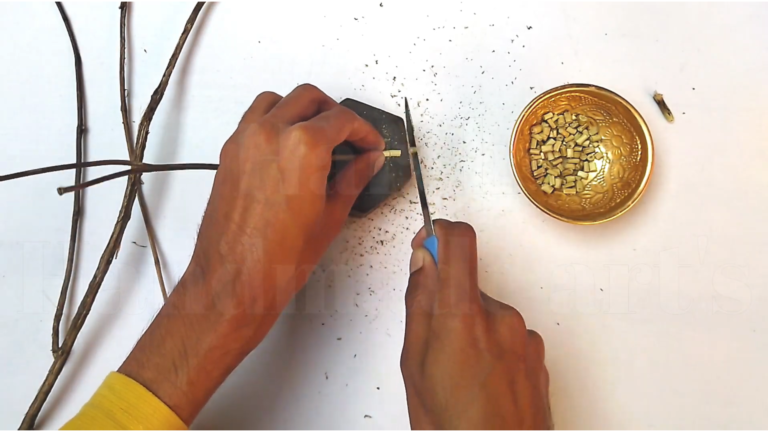
Smooth and Shape the Beads
To smooth out any rough edges and shape each bead, rub it with fine sandpaper. Depending on what feels natural, you can make them oval or round. Although it takes time, this method facilitates spiritual connection while crafting.
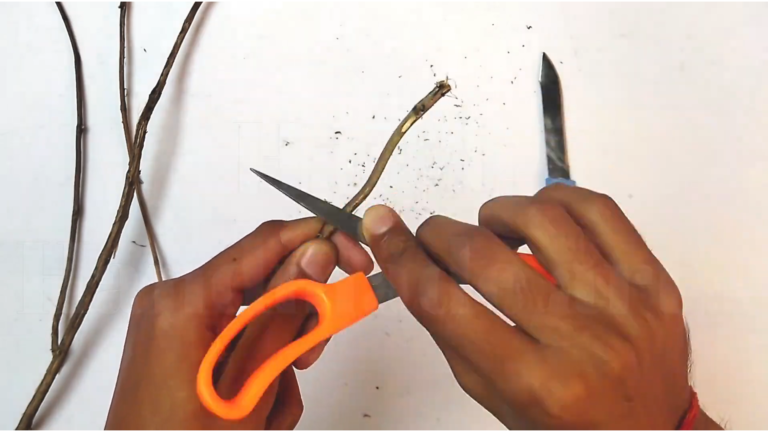
Drill Holes in the Beads
Create a tiny hole through each bead using a powerful needle or a hand drill. This calls for steady hands and patience. Take your time; rushing could cause the beads to break.
Safety Tip: To prevent damage, hold the bead with a cloth or clamp while drilling.
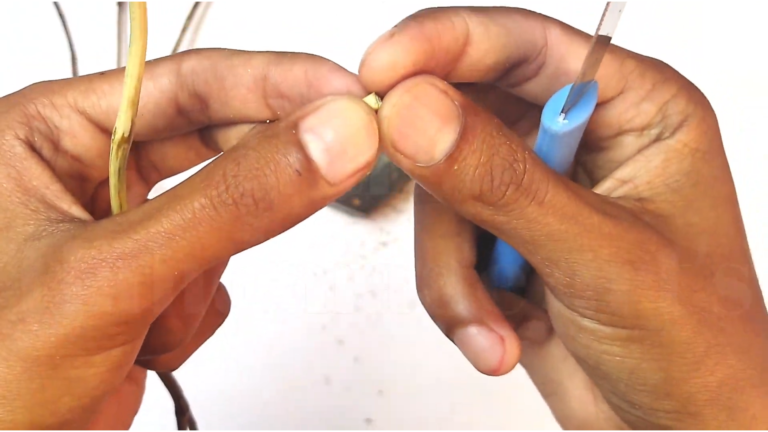
Create the Sumeru (Guru) Bead
Make one bead a little bit bigger; this is known as the Sumeru bead. It should be unique since it marks the beginning and end of the mala. Drill it similarly to the other
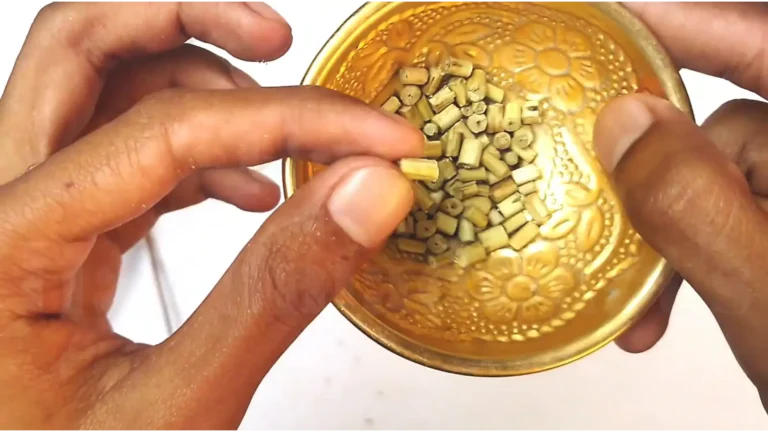
String the Beads
Start threading your cotton or nylon string with the 108 beads plus the Sumeru bead. For improved spacing and durability, you can optionally tie tiny knots between each bead.
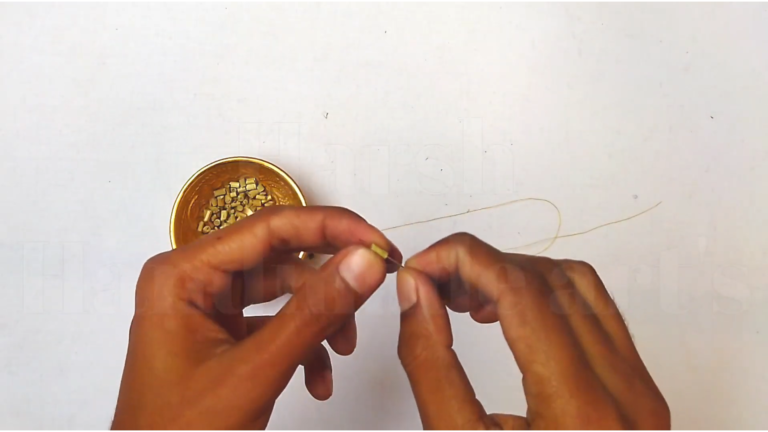
Tie and Secure the Mala
Once the stringing is complete, secure the knot firmly behind the Sumeru bead. If desired, a decorative thread or tiny tassel can be added. Your Tulsi mala is now complete.
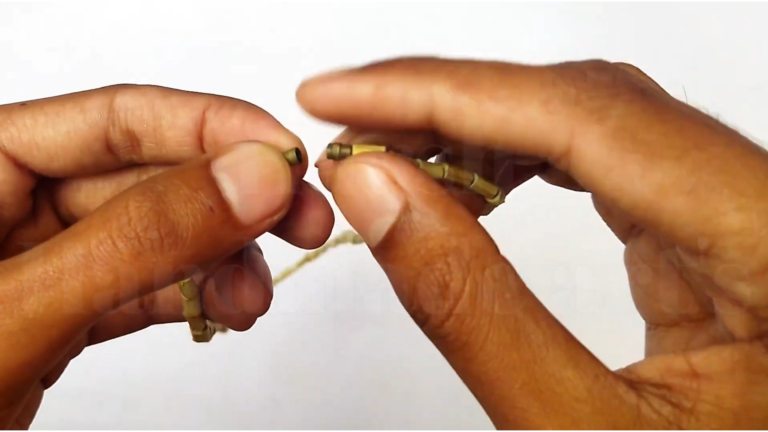
Cleanse and Energize the Mala
Using a fresh cloth, wipe the entire mala. A tiny drop of natural oil can be used to anoint it. Lastly, before using it, place it on your altar or briefly expose it to sunlight to bless and energize it.
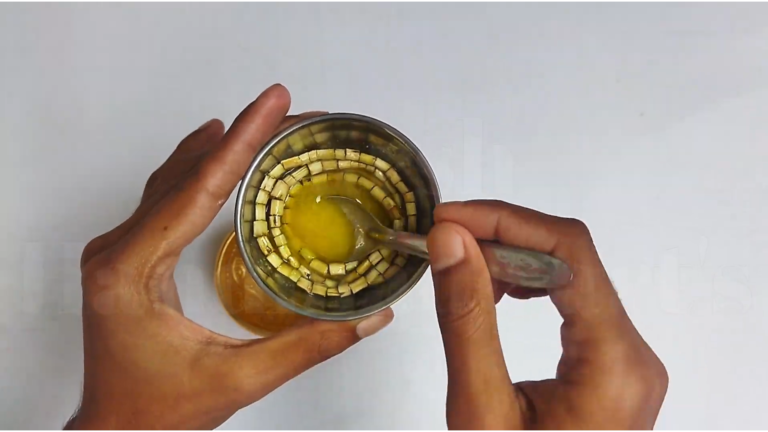
Additional Tips:
- Make your mala in a clean, quiet place, ideally after taking a bath or practicing meditation.
- To keep a spiritual attitude while crafting, chant or listen to bhajans.
- Wearing your Tulsi mala while sleeping or engaging in impure activities is not advised.
Making your own Tulsi mala at home is a holy act of devotion, not just a craft. Every string and bead you make conveys your love and intention. A handmade Tulsi mala is a lovely spiritual tool that can be used for daily prayer, mantra chanting, or as a gift to a loved one.
Try making Tulsi mala at home now that you know how to do it, and feel the calm and fulfillment that comes from making something by hand.








